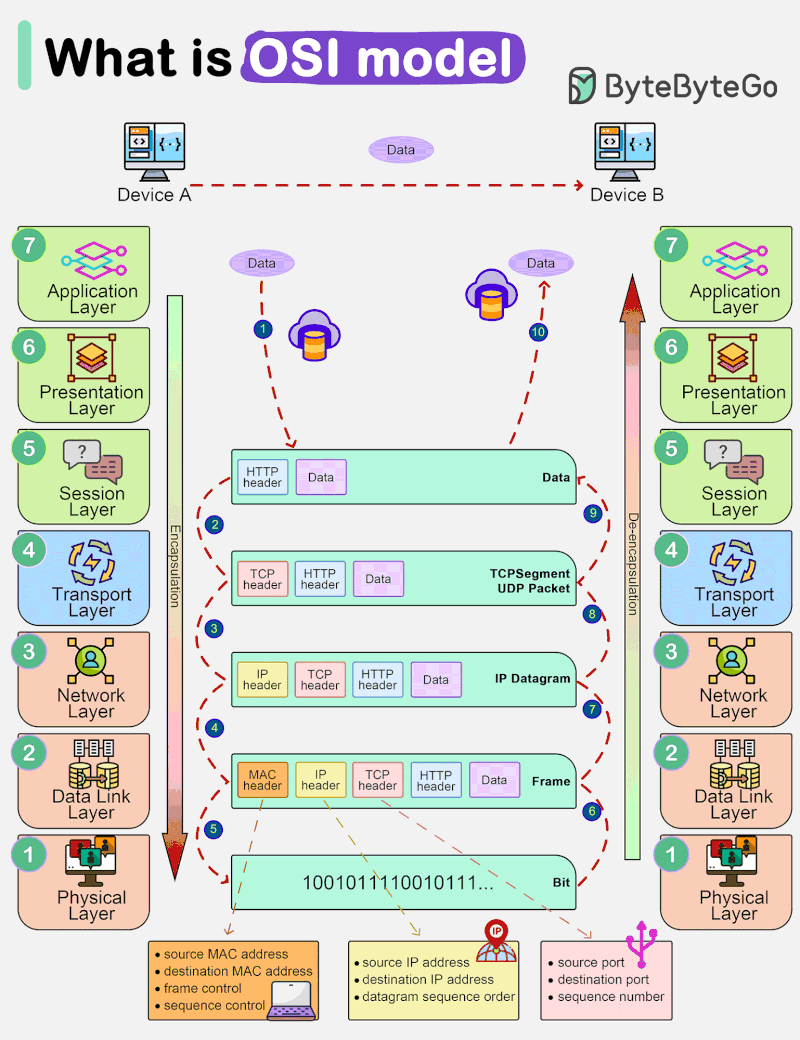Understanding the OSI model and TCP/IP is crucial for anyone interested in networking and the Internet’s inner workings.
When you’re browsing the web or sending an email, remember that it’s not just magic—it’s the meticulous organization of data through these layers that makes it all happen! 🚀
TCP/IP, on the other hand, is the protocol suite that underpins the modern internet. It doesn’t align perfectly with the OSI model’s layers but rather combines some functionalities. TCP/IP provides the rules and standards that govern data transmission, helping computers communicate across the globe.
The TCP/IP model, sometimes referred to as a protocol stack, can be considered a condensed version of the OSI model.
- Layer 1 (Network Access): Also called the Link or Network Interface layer. This layer combines the OSI model’s L1 and L2.
- Layer 2 (Internet): This layer is similar to the OSI model’s L3.
- Layer 3 (Transport): Also called the Host-to-Host layer. This layer is similar to the OSI model’s L4.
- Layer 4 (Application): Also called the Process layer, this layer combines the OSI model’s L5, L6, and L7.
📚 The OSI model, comprising 7 layers, is like the blueprint for understanding how data is sent over the internet:
1️⃣ Physical Layer: It deals with the physical medium, such as cables and hardware, where data is transmitted as electrical signals or light pulses. E.g Cables, RJ45
2️⃣ Data Link Layer: Responsible for error detection and correction on the physical layer, ensuring data frames are reliably transmitted between devices. E.g MAC, Switches
3️⃣ Network Layer: This layer handles routing and logical addressing, determining the best path for data packets to reach their destination. e.g IP, routers
4️⃣ Transport Layer: Here, data is segmented into smaller chunks for efficient transmission, and error-checking is performed. TCP (Transmission Control Protocol) and UDP (User Datagram Protocol) are key players in this layer. e.g TCP, UDP, Port Numbers
5️⃣ Session Layer: It establishes, maintains, and terminates connections between devices. It ensures proper synchronization between them. E.g Syn/Ack
6️⃣ Presentation Layer: Focusing on data translation, encryption, and compression, this layer ensures that data is in a format that both sender and receiver can understand. e.g Encryption, ASCII, PNG, MIDI
7️⃣ Application Layer: The topmost layer, where applications interact with the network. It handles user requests and communication, like HTTP for web browsing and SMTP for email. E.g SNMP, HTTP, FTP
Source: Tamer Said (Snr Network Engineer)



